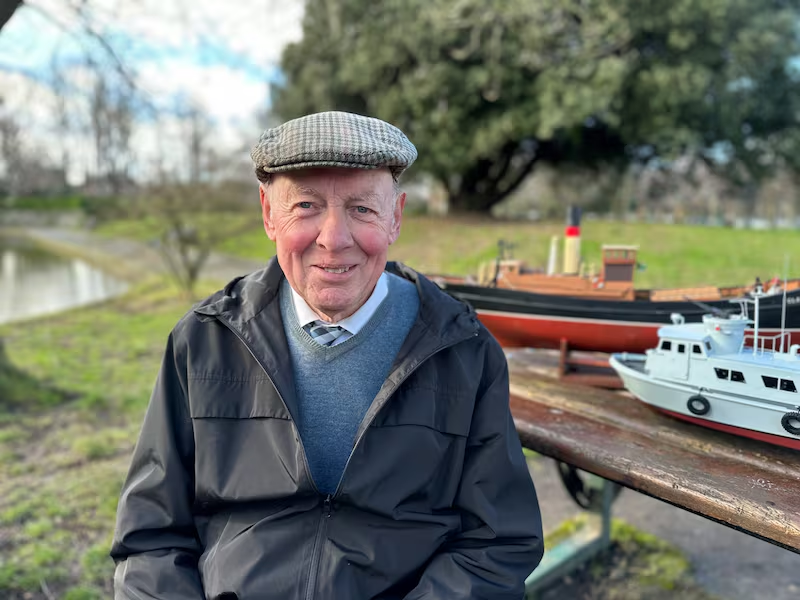In the early days of Dublin Radio Model Boat Club, we had more than 60 members, but now we’re down to a dozen or so. Young people nowadays don’t have the interest like there used to be. Which is sad really because it’s a great hobby. You can learn so much from it.
My name is Ken Finn, I’m 75 years of age and I make remote control model boats. My interest stemmed from my late parents. My dad was very good with his hands regarding carpentry and my mum was good with fine needlework and embroidery.
When I was very small I enjoyed putting together model aeroplane kits. I went from there to more advanced rubber band-powered models, and soon was building boats and planes from scratch. I love doing it – I love doing anything with my hands really.
For 42-odd years I worked in maintenance for spray paint machines. I enjoyed every minute of it. We were spraying all types of materials, from small models to big ships. I retired back in 2013. I really miss it though.
RM Block
I keep busy these days by making model boats with the help of others in the club. Our boats are usually built from scratch or from a modified kit. If it’s a scratch-built boat, you’d buy all the wood and materials and build everything from the ground up. Then you just fit the radio gear, the electric batteries and off she goes.
I’m the chairman of the club and originally joined in the late 1970s. It was founded in 1898 and we believe it’s the longest continuously running model boat club in the world. At one stage we were out in Blackrock Park, then we used a lake at UCD Belfield for many years and now we’re in Herbert Park every Sunday morning.
In the park people love to come over, take photographs and talk to us about the boats. That in itself can be very rewarding. We used to have competitions when there were a good few of us down there: sailing boats, tugs, little cruising boats, etc. But lots of members have passed away now.
You become totally absorbed in it and you can hear or see nothing else
When we go down on a Sunday morning, we mainly talk about boating things, you know? There’s always somebody down there who would be only too pleased to give you a hand with the boat. One of the guys is a retired electrician, so he can be very useful. There is one gentleman in his late 80s, and he’s very active. And another aged 94 who’s into submarines. He’s been doing model boats since Adam was a boy, as they say. When I built a sub a couple of years ago, I got great help from him to balance it.
I have a model 1950s tugboat, and it so happened that one of our members worked on a full-scale one over in the UK many years ago and he was able to fill me in on the more detailed aspects of the model – little things that may not be on a plan. On that boat, I had a friend help me transfer the line drawings into shapes for the model frames. It can be very collaborative.

I could sit down to work on the model and the hours would go in, I wouldn’t even notice time passing. It takes you to a different world – a different dimension. You become totally absorbed in it and you can hear or see nothing else.
You generally buy the plywood or balsa wood, cut the frames and build it upside down on a building board. Then, using waterproof glue, you simply glue on the stringers that form a skeleton of the boat. You cut out the pieces from maybe a one-sixteenth of an inch of plywood – that’s what I used on the tug – and you glue that into the hull. Then you drill the hole for the propeller and the rudder, and flip it around on to a stand and build the rest.
We like to build as many fittings as we can. The fun is building them and getting little knick-knack bits here and there. I needed a foghorn once for a cabin, and the top of a superglue can was a perfect sample for that. If you need tyres to go around the edge of it, you would go into one of those pound shops, let’s say, buy a tractor or whatever and take the tyres off it. It’s just a matter of hunting around to find the right thing. – In conversation with Conor Capplis
















